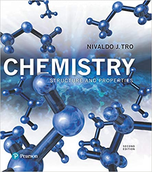?Which kinds of conversion factors are inherent in chemical formulas? Provide an
Chapter 4, Problem 24(choose chapter or problem)
Which kinds of conversion factors are inherent in chemical formulas? Provide an example.
Unfortunately, we don't have that question answered yet. But you can get it answered in just 5 hours by Logging in or Becoming a subscriber.
Becoming a subscriber
Or look for another answer
